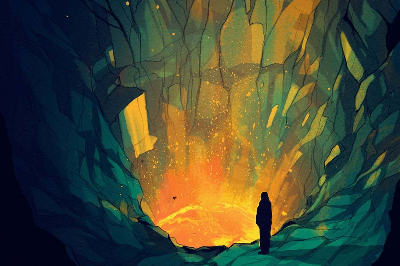
© https://www.newscientist.com
На півночі Ісландії стартує амбітний науковий експеримент, який вже охрестили «революцією у вулканології». Проєкт Krafla Magma Testbed (KMT) передбачає перше в історії контрольоване буріння прямо у магматичну камеру активного вулкану — Крафли. Це місце, де народжується магма, і яке до цього моменту залишалося для науки майже недосяжним. Дослідники планують встановити сенсори безпосередньо в середовищі магми, щоб спостерігати за її динамікою в реальному часі. Такий підхід може докорінно змінити наші уявлення про вулканічні процеси та суттєво покращити точність прогнозів вивержень. Унікальність проєкту полягає у тому, що замість аналізу непрямих ознак (як-от сейсмічна активність або викиди газів), учені вперше отримають прямий доступ до «серця» вулкану. Це дозволить не лише краще зрозуміти механізми вивержень, а й розробити нові методи раннього попередження для захисту населення. KMT також має потенціал стати проривом у сфері геотермальної енергетики. Магматичне тепло — джерело колосальної енергії, і досвід цього проєкту може допомогти у розробці нових технологій для її безпечного видобутку. Хоча втілення KMT ще триває, наукова спільнота вже називає його можливим «телескопом» для вулканології — інструментом, який відкриє нову еру в розумінні того, що відбувається глибоко під землею.
Drilling into a volcano’s heart could transform the future of science
An ambitious scientific experiment is underway in northern Iceland, already being hailed as a potential revolution in the field of volcanology. The Krafla Magma Testbed (KMT) project aims to carry out the world’s first-ever controlled drilling directly into the magma chamber of an active volcano — Krafla. This is the very birthplace of magma, a zone that until now has remained virtually inaccessible to science. Researchers plan to install sensors inside the magma itself to observe its behavior in real time. This unprecedented approach could dramatically reshape our understanding of volcanic activity and significantly enhance the accuracy of eruption forecasting. What sets the project apart is its shift from indirect analysis — such as monitoring seismic activity or gas emissions — to direct access to a volcano’s core. For the first time, scientists will be able to study the inner workings of a volcano from within. This could not only deepen our understanding of how eruptions begin but also lead to the development of new, more reliable early warning systems to protect at-risk populations. The KMT project also carries the potential to revolutionize geothermal energy. Magmatic heat is an immense and untapped energy source, and the insights gained from this project could pave the way for new, safer technologies to harness it. While the full implementation of KMT is still underway, the scientific community is already calling it a possible “telescope” for volcanology — a powerful tool that could usher in a new era of insight into what truly happens deep beneath the Earth’s surface.
1037